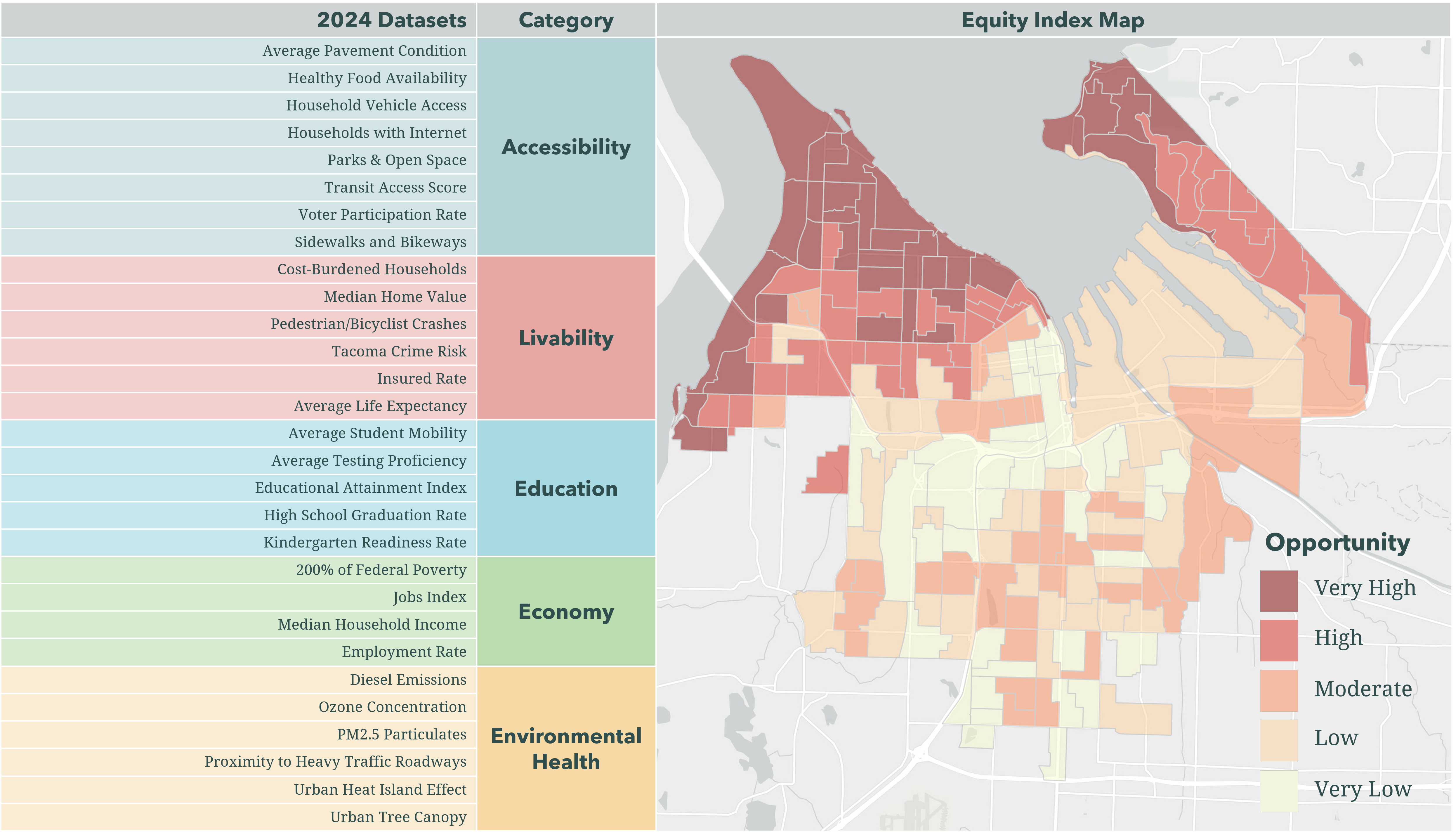Tacoma's Equity Index
Our neighborhoods are full of amazing, talented people who bring experience, culture and education from here and around the world. Which is why we are committed to investing in all of our communities in ways that enhance their character and make them more livable across our neighborhoods.
We are still feeling the effects of decades of intentional disinvestment that harmed communities of color at disproportional rates. To transform into an antiracist city and reverse the inequities caused by the negative impacts of racist policies, practices and zoning, will take diligence, persistent determination, and intentional antiracist management of investment.
The Equity Index is a data-driven tool to see where your projects, policies, programs or services can have the largest impact on addressing inequity and where investment can provide the biggest improvement in factors that impact life outcomes.
NEW! July 2024 - Equity in Action Case Study Collection Now Available
The City of Tacoma’s Office of Strategy published a collection of case studies showcasing the City of Tacoma’s successes and positive progress with the Equity Index tool that launched in 2018.
The collection – entitled “Equity in Action: Tacoma Equity Index Case Studies, Using Data to Operationalize Equity and Transition into an Antiracist City” – features 21 examples of how the City of Tacoma and its community partners have utilized the Equity Index to make intentional, data-informed decisions supporting more equitable outcomes in Tacoma’s diverse communities.
The collection was designed to be a resource for City of Tacoma departments, as well as other jurisdictions, community partners, and civic leaders across the nation, in their ongoing work to increase equity and opportunity for historically marginalized communities.
Download the Equity in Action Case Studies
Explore the Equity in Action Storymap
How Tacoma Uses the Equity Index
The City of Tacoma uses the Equity Index to identify, track, and close disparities, and prioritize investments based on where and who has access to opportunity, for example opportunity to safely walk to school, opportunity to earn a living wage job, opportunity to access healthy food and opportunity to have safe and health environmental interactions.
Simply put, a resident who has access to many transit routes has higher opportunity and accessibility than a resident who has access to limited routes and no sidewalks.
There are 34 indicators, which are used to assess community strengths and disparities and help identify how we can make investments to increase resources and interrupt inequity.
Tacoma Equity Index Map
Pierce County Equity Index Map
Ask a question or share feedback, ideas, stories
